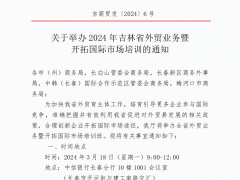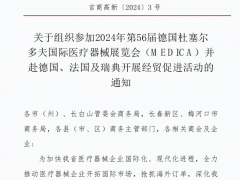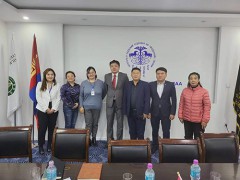Recently, a well-known Japanese company will reduce the price of two products - machine tool CNC system and drilling and tapping center in the Chinese market, the drop is more than 20%. The important reason is that the CNC drilling and tapping center produced by Shenyang Machine Tool Group has entered the Pearl River Delta in a large way for the manufacturing of electronic product parts such as mobile phone casings. Previously, the market was almost monopolized by Japanese companies. The reason for breaking the monopoly is that Shenji Shanghai Research Institute independently developed the "i5" numerical control system in 5 years, and innovatively implanted the Internet gene, so that Siemens met to discuss: why the machine tool reflecting the concept of "Industry 4.0" was first born in China?
The question can be further focused on: Why was the i5 intelligent system born in Shanghai? What inspiration does this bring to Shanghai's technological innovation, especially the technological innovation of state-owned enterprises?
State-owned enterprises should have a long-term vision in their R&D decisions
The middle and high-end CNC machine tools used by Chinese enterprises have long been monopolized by foreign companies such as Siemens and Fanuc. In July 2006, under the direction of the central leadership, Shenji Group began to develop CNC systems. The Group has cooperated with Yaskawa Electric Co., LTD., Japan, an Italian CNC machine tool company, and Shenyang Institute of Computing Technology, Chinese Academy of Sciences. Group general manager Guan Xiyou also found university brother Zhu Zhihao, hoping that he can lead the research and development team of Shenyang aircraft, and cooperate with Japanese and Italian enterprises.
At that time, Zhu Zhihao, who was a teacher at Tongji University, was not a professor or an academician, but he had long studied CNC machine tools. When he learned that Shenji Group and the local government would jointly invest 100 million yuan a year in research and development funds, Zhu Zhihao was persuaded and decided to "go out of the mountain" to assist his brother, but he made two requirements: the research and development team must work in Shanghai; The management should ensure the autonomy of the R&D team and not interfere too much in the decision of the technical route.
"Shanghai is the highland of domestic scientific research talents, and the team can recruit more excellent employees by staying in Shanghai." Zhu Zhihao explained, "The second requirement is put forward because the administrative intervention of state-owned enterprises is often more, and the research and development team is vulnerable to influence in the choice of technical routes." Fortunately, the management of Shenyang provided a very relaxed environment, and the distance between Shanghai and Shenyang also made us in a 'free-range' state."
Zhu Zhihao formed the founding team of 10 people, most of them are "post-80" master, from Tongji, Shanghai Jiaotong University and other universities, education is not high, and have not studied CNC machine tools before, only related professional master. In November 2007, Shen Ji (Group) Design and Research Institute Shanghai branch was established, Zhu Zhihao led these young people on the road of "learning while doing".
At the beginning of the establishment of the branch, Japan Yaskawa wanted the Shanghai team to adopt their digital bus technology standards, Zhu Zhihao did not agree. It is true that after the adoption of this enterprise protocol, the research and development process can be greatly accelerated, and it is estimated that a numerical control system can be made in a year or two, but the scalability of the product will be limited. Shenji management had a "tangle" at that time: is it to introduce foreign technical standards and make products as soon as possible, or independent research and development to increase time and uncertainty? In the end, they chose the latter.
In this regard, Zhu Zhihao deeply felt: "The leaders of state-owned enterprises have a term of office, if two or three years of investment can not do something, the pressure can be imagined." "But for the sake of long-term development, soes' leaders should try to avoid being influenced by short-term interests when making decisions." The management of Shenji Group has waited patiently for five years and invested hundreds of millions of yuan continuously, in exchange for the breakthrough achievements of the Shanghai team.
Mastering core technologies should be "bottom-up"
Huang Yunying, master of Tongji University, was a member of the founding team. After the establishment of the Shanghai branch, he and his friends went to Italy for training. The company, which produces highly technical five-axis CNC machines, ushered these young "amateurs" through the door. However, the joint venture process since then has disappointed Huang Yunying and others: the Italian company has given the Chinese personnel a motion control platform in a "black box" state, and all data and code are not open. All the Chinese people have to do is to sinicize the user interface, without any technical content. "After half a year of cooperation, we found that we couldn't learn the core technology, so we decided to develop it entirely on our own."
It's not an easy decision to make. Machine tool numerical control system code up to millions of lines, to write them out line by line, the technical difficulty, manpower and time costs can be imagined. Guan Xiyou asked the Shanghai team: Should we buy this Italian company? The latter replied: Even with the acquisition, we still don't know how the code is written. The way to master the core technology in many areas is not joint ventures, not acquisitions, nor secondary development on the introduced platform, but to make the entire system "bottom-up" by relying on their own strength.
Huang Yunying recalled the scene when the system was developed: the winter in Shanghai was very cold, a group of young people wrapped in down jackets, knocking code in the workshop, knocking hands and feet cold. I don't know how long it took, but when I looked up, everything was dark. Because of the inability to delay customer production, members of the Marketing Department can debug the system after the customer gets off work, sometimes all night, and there are people in the customer workshop "New Year". Since 2008, the Shanghai team started from the underlying algorithm and did machine tool experiments while writing code. According to incomplete statistics, they have carried out a total of 1917 large and small versions of the numerical control system update, in the numerical control core part to write more than 200,000 lines of overall code, more than 50 core algorithms, in the servo drive control part to write more than 20,000 lines of core code, more than 20 core algorithms.
In the meantime, the advantages of Shanghai's talent highland have further emerged: in order to complete the project, the R & D team has expanded to about 200 people, accounting for 40% of undergraduate and master degrees, and a group of backbone from well-known universities in Shanghai.
The R&D organization model should be more conducive to innovation
In the workshop of the Science and Technology Park of the National University of Science and Technology, the reporter saw the "science and technology men" of the Shenyang Machine Tool Shanghai Research Institute, some of them were dismantling the device, and some were buried in the pile of wires. Beside them, there are a number of i5 CNC machine tools that can be networked, such as five-axis linkage machine tools, drilling and tapping centers, and vertical machining centers.
How did the Shanghai team develop a "template machine" that embodies this concept before Germany proposed "Industry 4.0"? "A lot of people take one look at German industrial software and are scared off because it's too professional. We thought, Can we make the user interface close to the mobile software, so people want to click on it?" Huang Yunying said. Then they thought, can we design a transmission protocol, so that all the data of the CNC system can be transmitted to the Internet? Under the guidance of this innovative thinking, they developed the i5 intelligent system, where an "i" stands for Internet.
Today, Shenji Group relies on the i5 CNC system and is cooperating with Digital China and Guangda Financial Holding to build an "intelligent cloud manufacturing platform". More than 2,000 i5 CNC machine tools have been connected to the cloud platform, and it is expected to reach 10,000 by the end of this year. Using the data they upload, Smart Cloud is exploring a variety of innovative business models, such as "pay per piece" machine tool rental business, to provide customers including makers idle machine tools; Another example is personalized jewelry customization, creating jewelry with specific requirements for consumers.
Wang Yingchun, an associate researcher at the Shanghai Institute of Science, believes that the burst of innovative thinking in the Shanghai team is related to the advanced research and development organization model. The system and atmosphere of Shenyang Machine Tool Shanghai Research Institute is a bit like Google, such as the implementation of flexible working system, considering that young people love to sleep late, do not stipulate employees to the unit time every day; After the birth of a child, employees can work from home one day a week and write code with the child. "Our work is mainly software development, and a lot of times it's like working on Goldbach's conjecture, you need inspiration, so you have to create a relaxed working environment." Zhu Zhihao said. Like Google LABS, there is no authority here, and young people can think big and discuss freely. According to Zhu Zhihao, graduate students are often more innovative than professors because they are not bound by conventional ideas.
The organizational model of Shenyang Machine Tool Shanghai Research Institute is also characterized by its opposite system, which is almost free from intervention and assessment, and has received financial support for many years. Wang Yingchun said that corporate R&D organizations are undergoing a change globally, from traditional models such as Academia Sinica to the maker space model, in which innovation teams are separated from the original system of the company and placed in a more open and flat environment. Shenji Group has done a good exploration in this respect, and Shanghai state-owned enterprises should also speed up the reform process of R&D organization mode to better stimulate the innovation vitality of employees.
 Customer service hotline:
4000085670
Customer service hotline:
4000085670
-
My purchase list
- Customer service center|
- VIP service |
- sitemap
Characteristic channel
- Industrial chain
- Supply chain
- cross-border procurement
- Global market
- exposition
- Cross-border talents
- Cross-border common sense
- Service area
- Map storage
- Conversational brand
- Direct broadcasting room
- Cross-border download
- Overseas purchase
- Group buying
- Curriculum vitae
- Dynamic state
- News media
- Attract investment overseas
- National pavilion
- Help center
- Idle resource
- Import & Export
Extended zone
- Mobile terminal
H5 Mobile terminal
Mobile access is faster
Wechat public account
Mobile check-in wins points
Wechat mini program
Play with mobile new marketing



